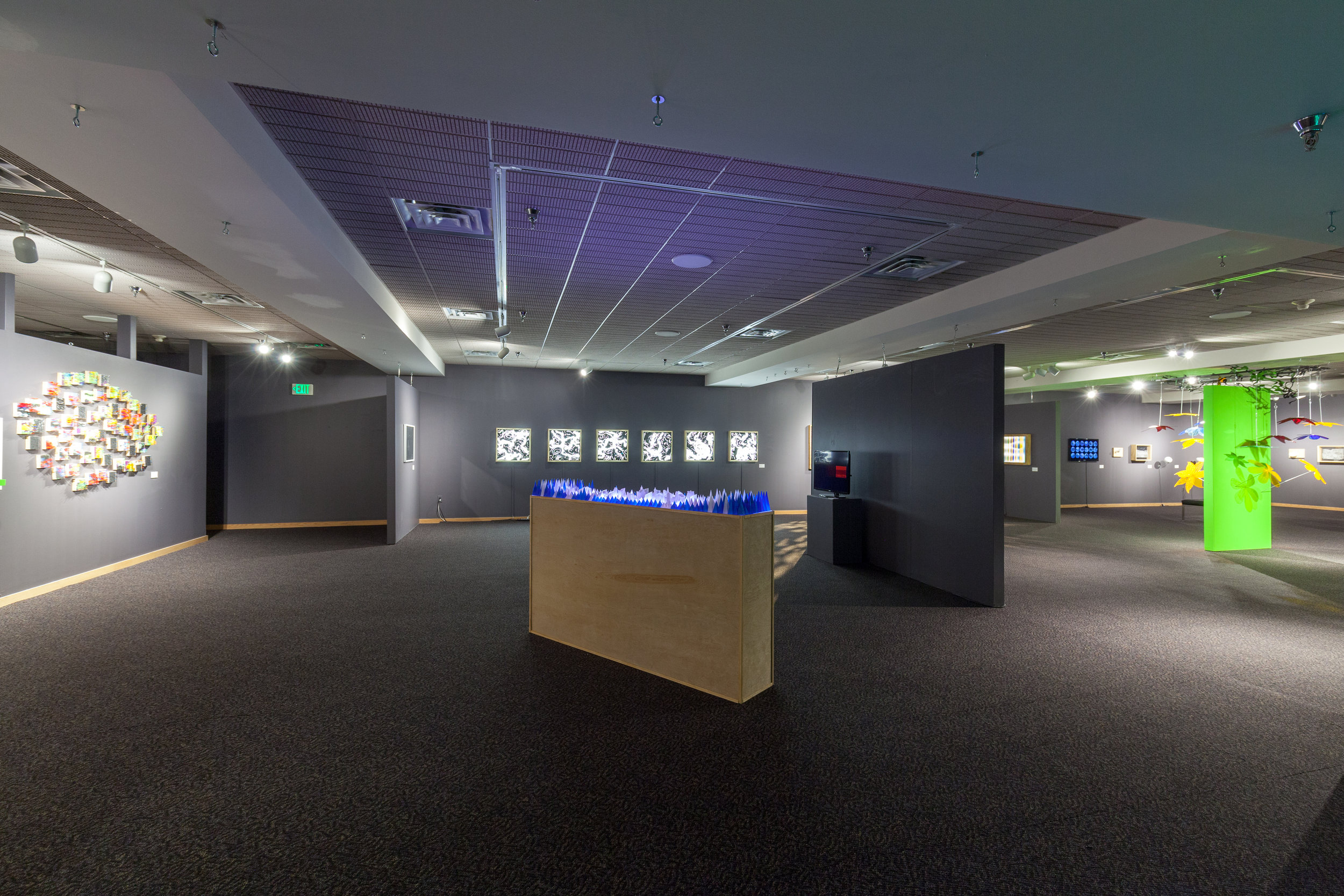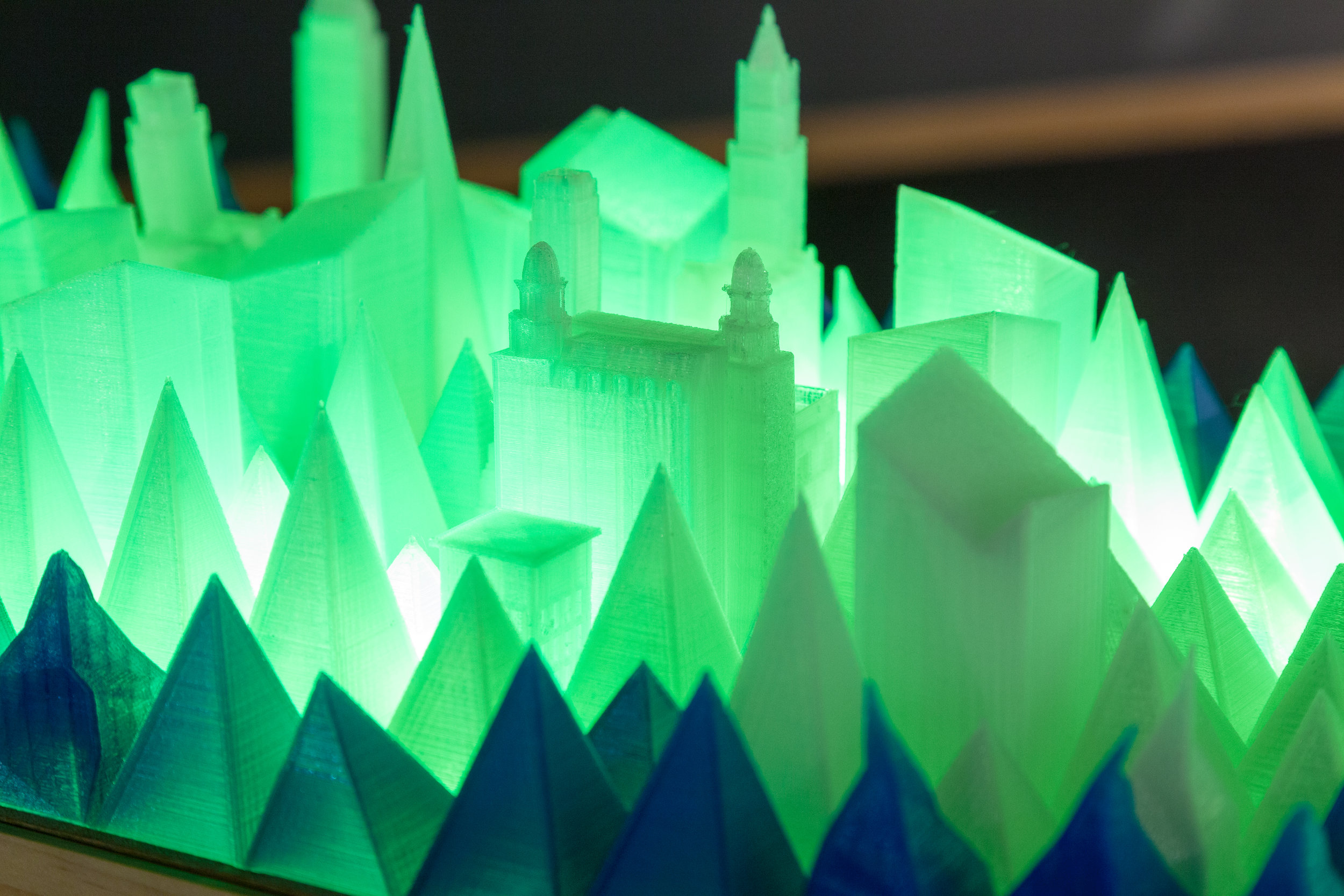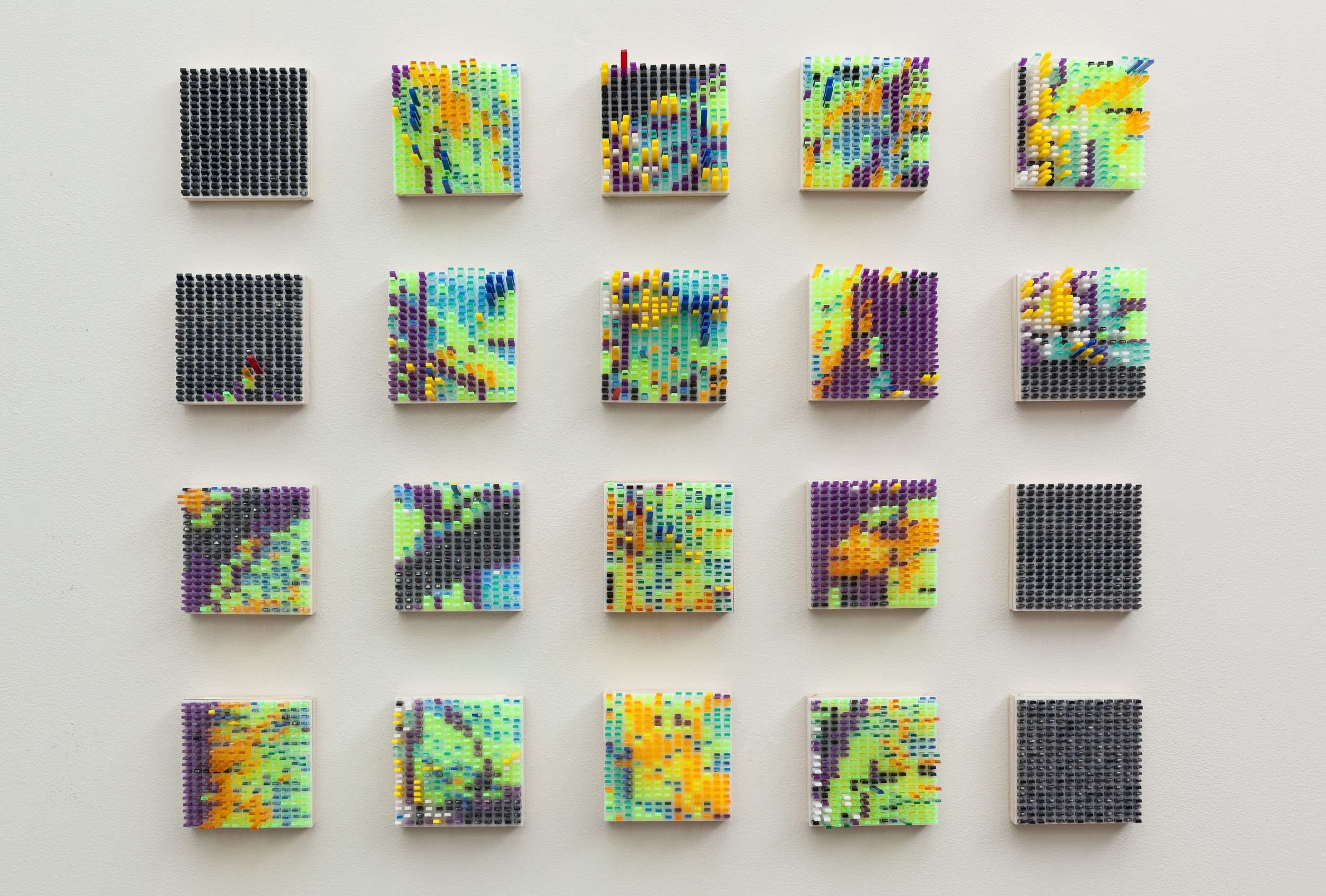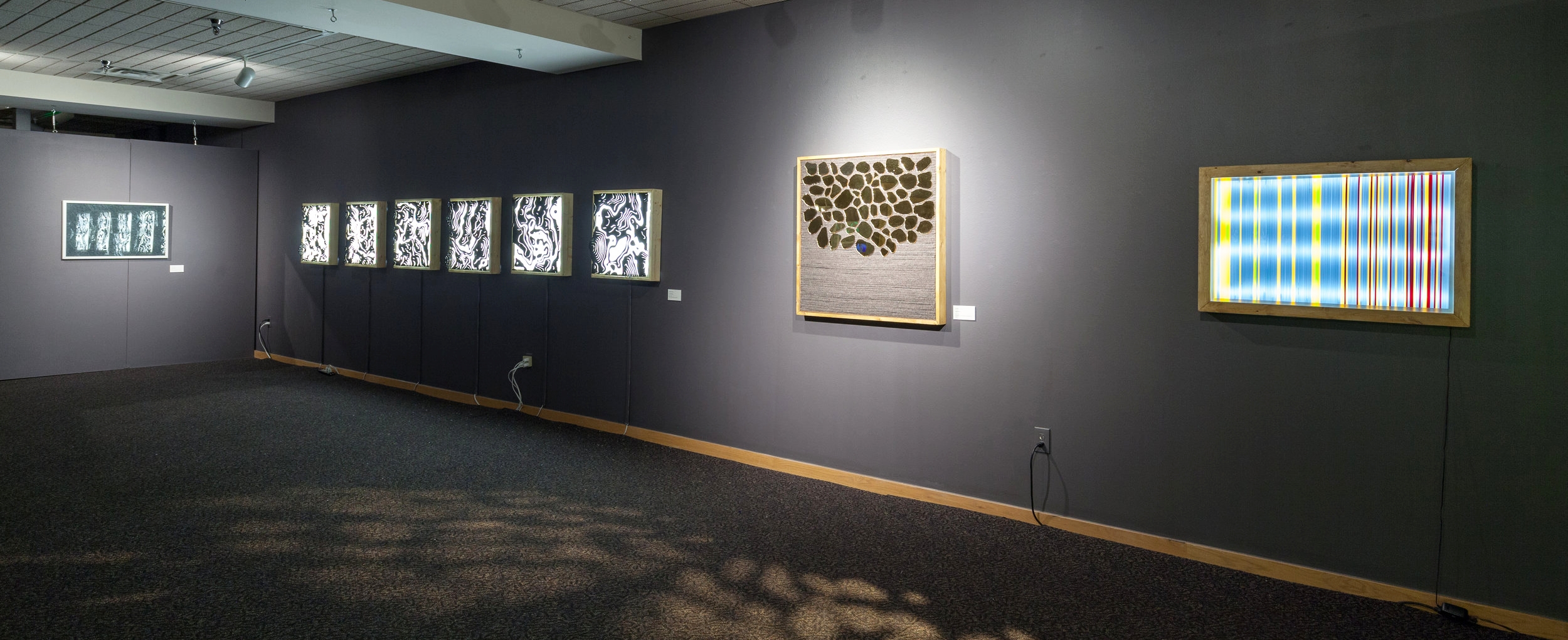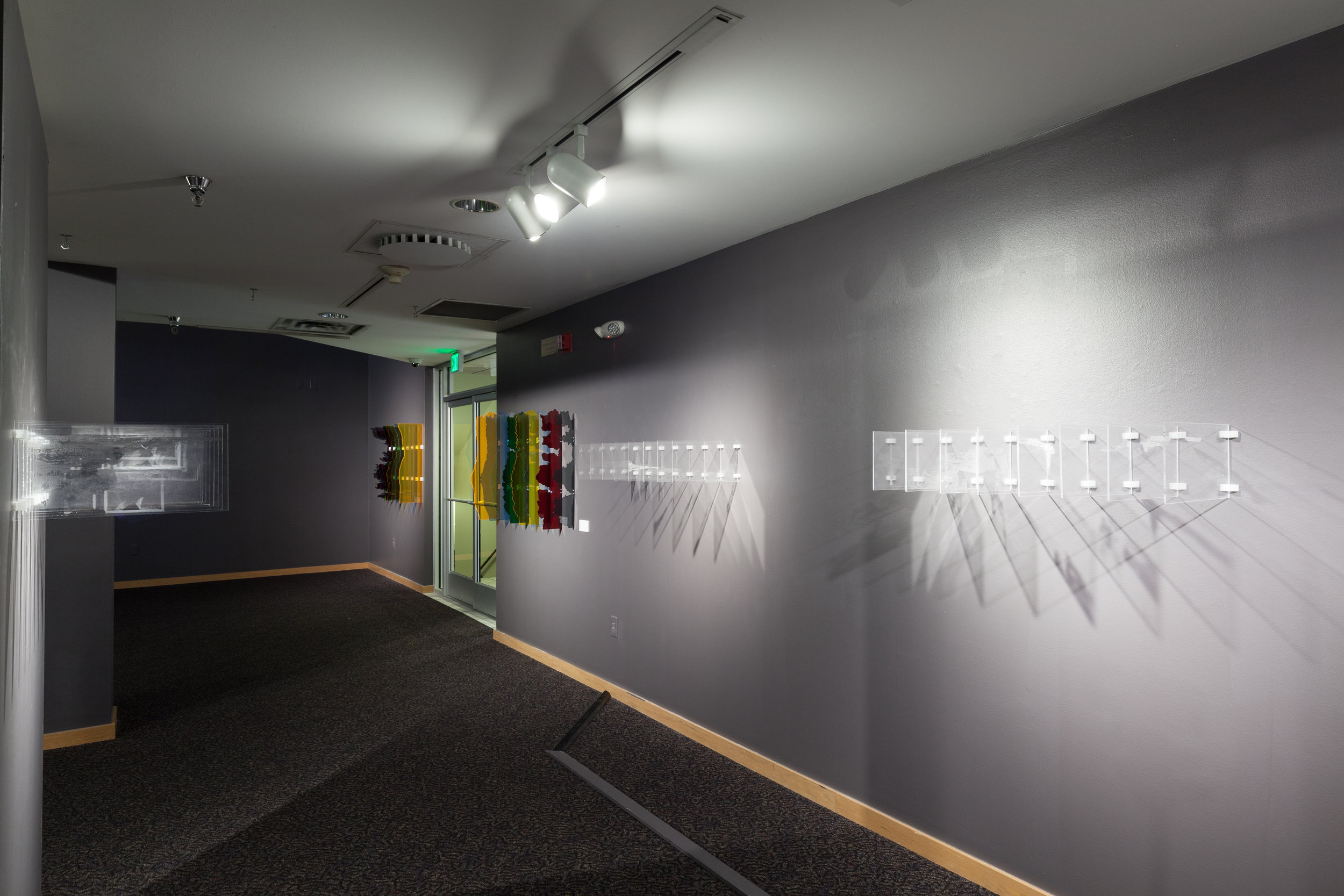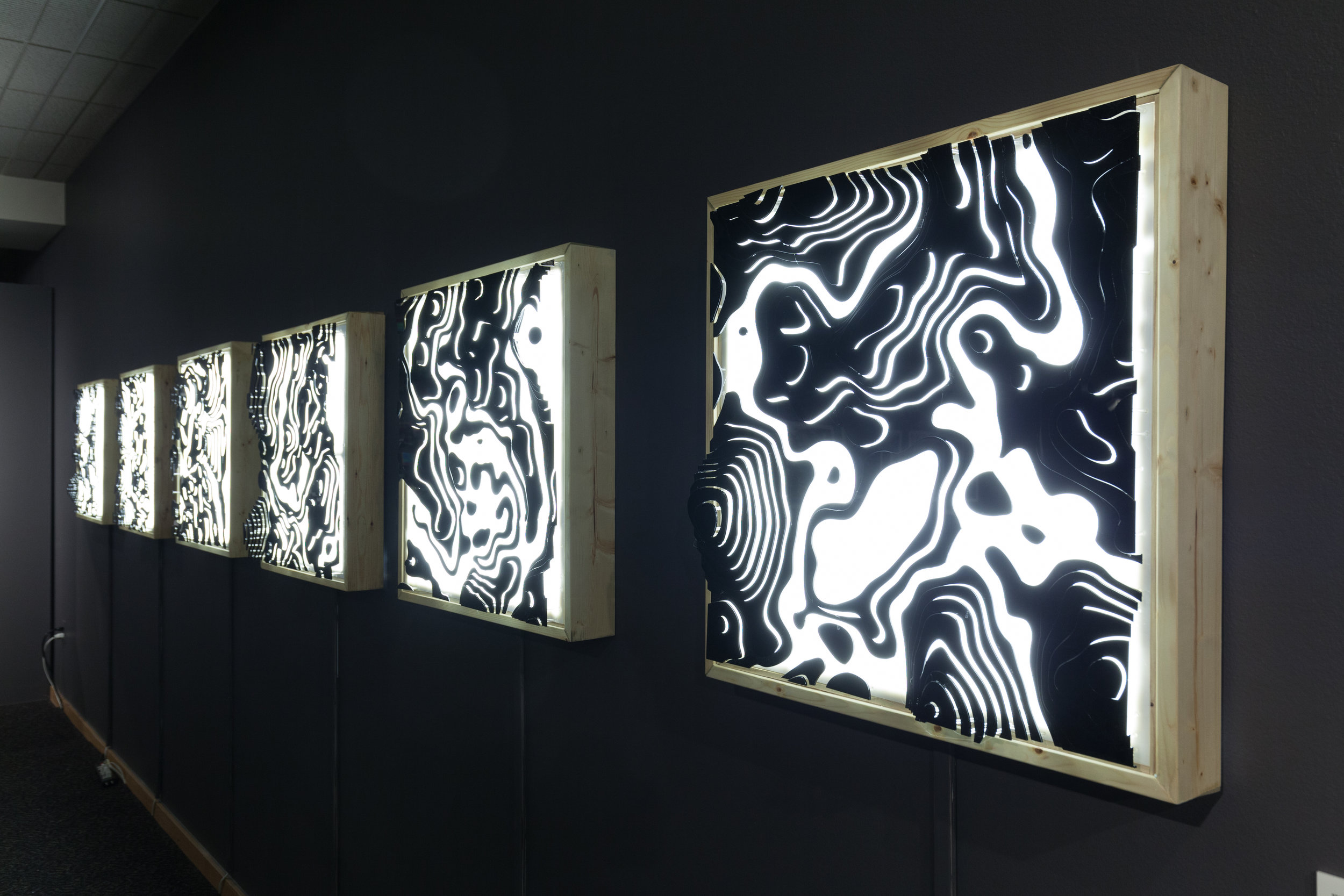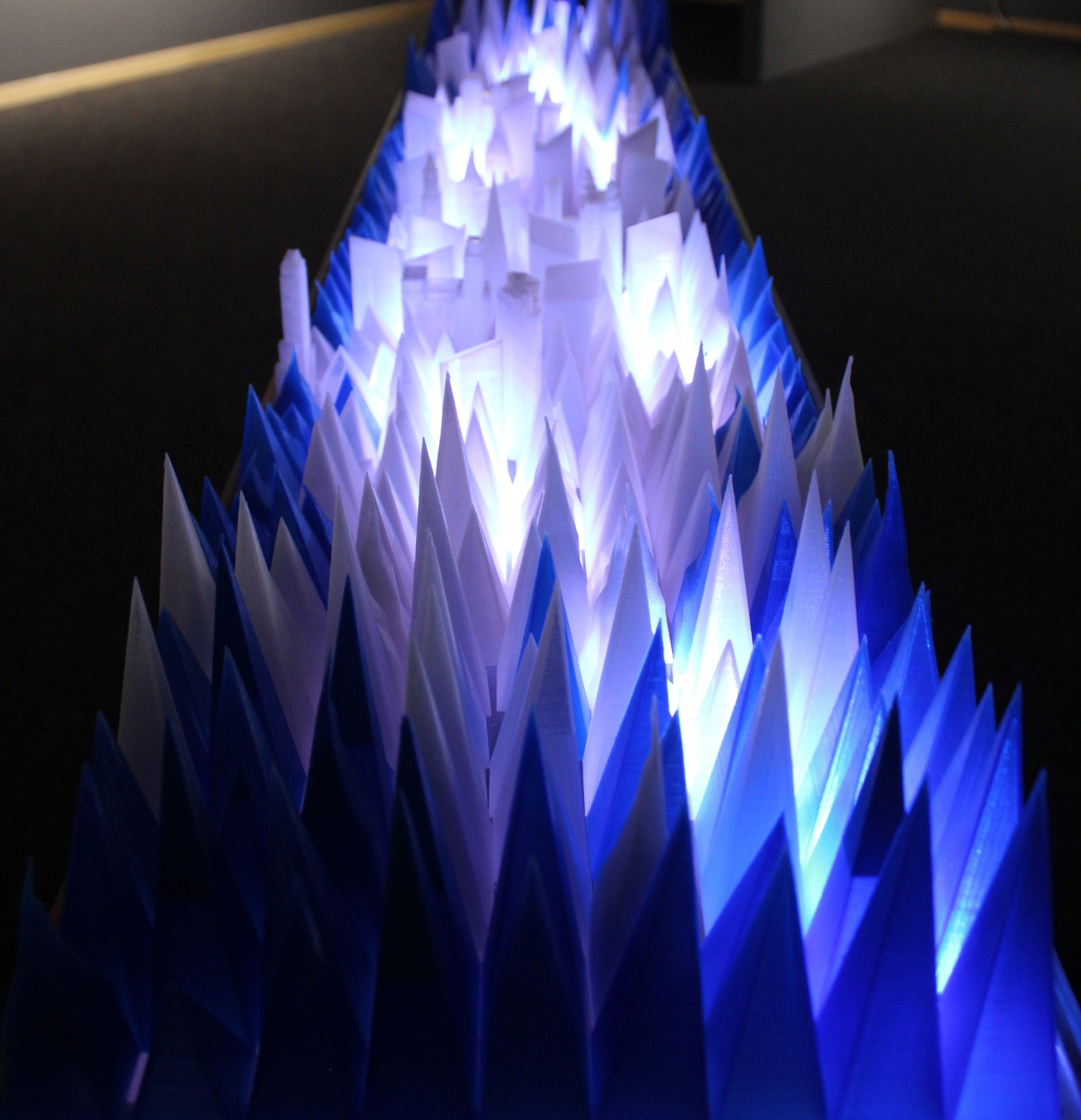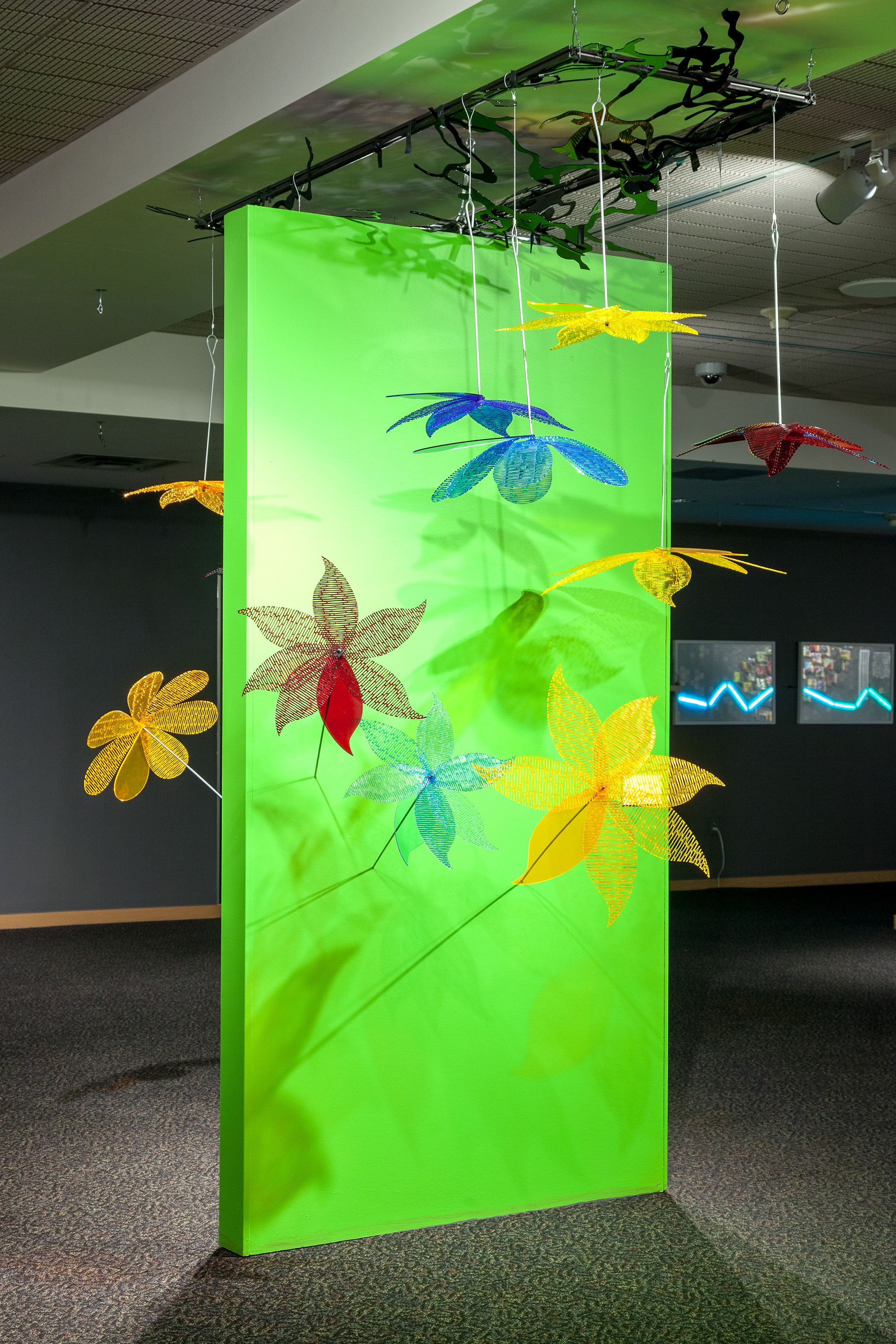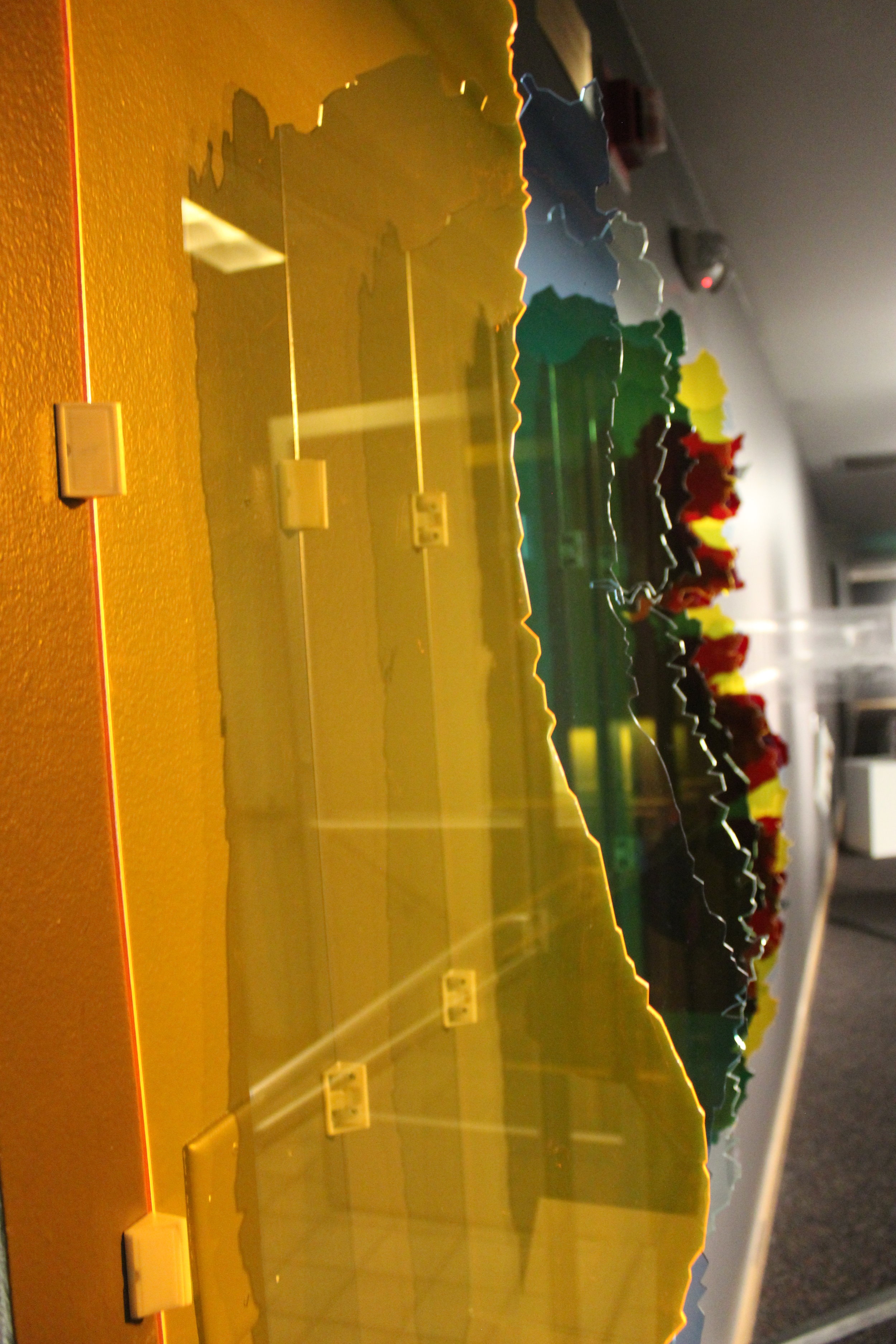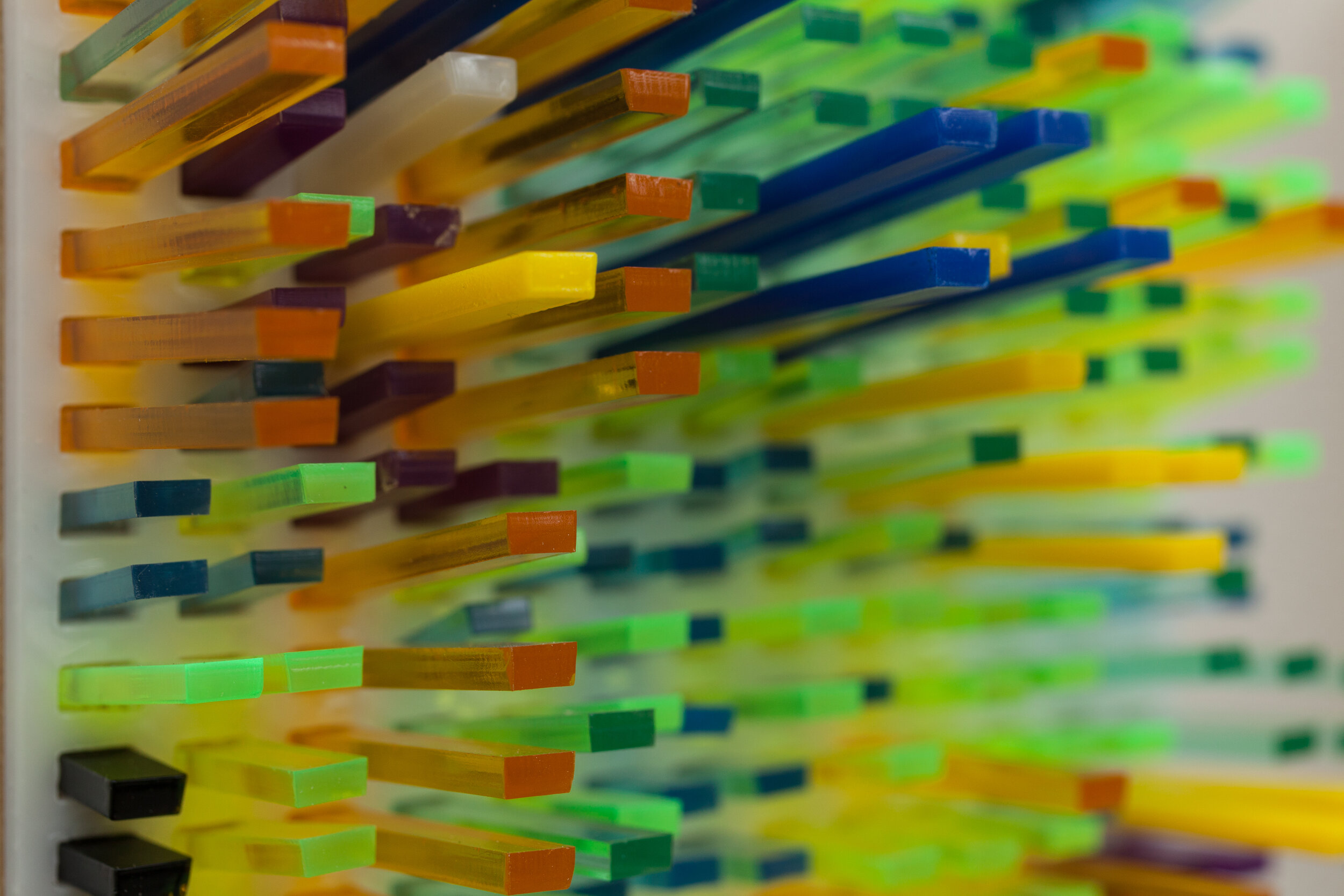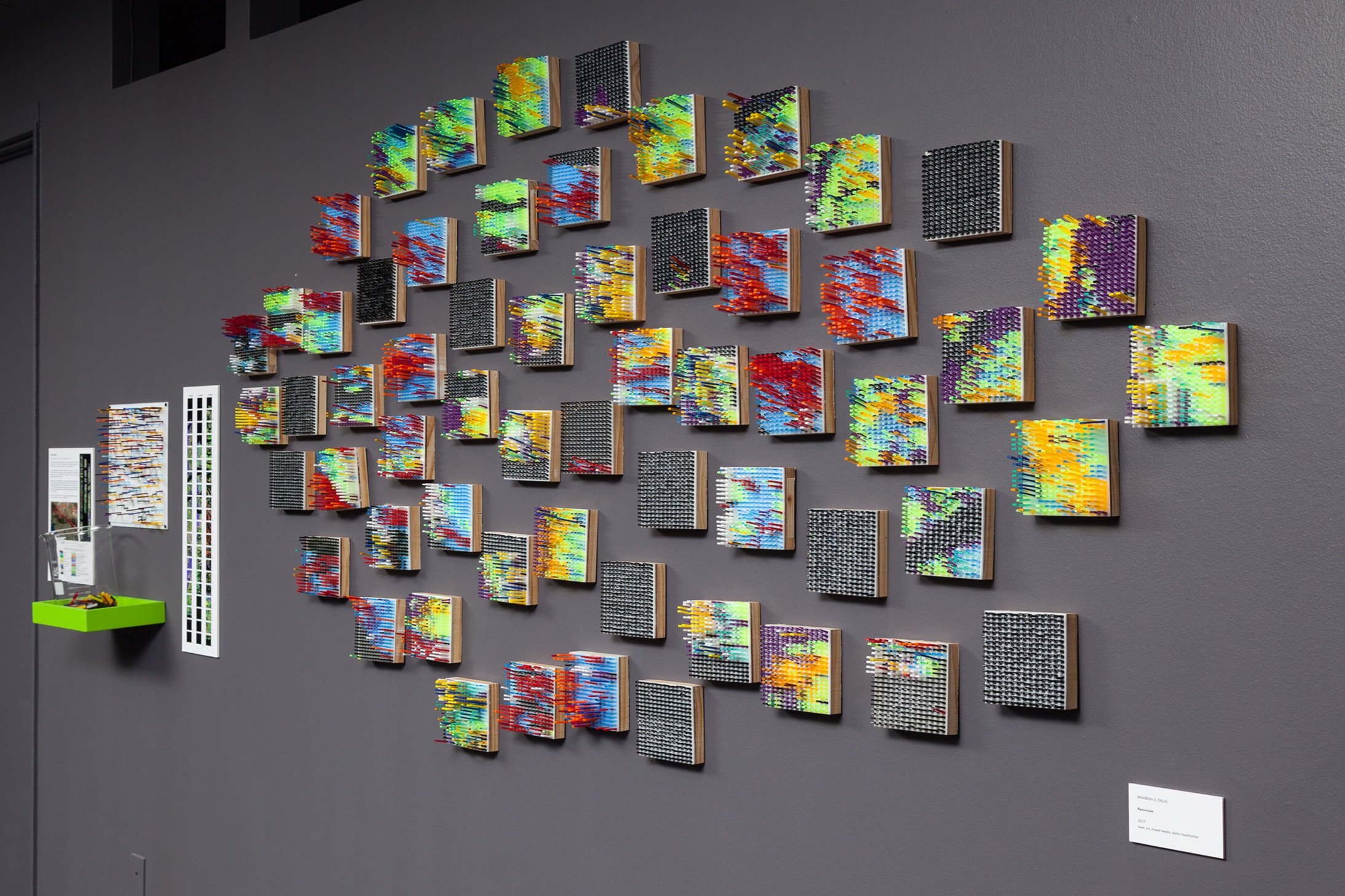INNATE CONFLUENCES, 2017-18
innate confluences is a critical exploration of human impact on the environment. Through a series of data-driven visualizations, live-video experiments, 3-dimensional reconstructions, and audience-responsive interactive pieces, innate confluences reflects, through many sizes, shapes and media, what Western North America looked like prior to and after humans appeared on the natural landscape, nearly 12,000-years-ago. innate confluences is predicated on evidence that human presence has altered the natural landscape and the species that are a part of it, through questions: how has the presence of humans altered the natural world, and how has the natural world influenced human culture?
This creative exploration is my attempt to address these questions. Biological changes occur naturally across Earth’s landscapes. innate confluences aims to contrast natural occurrences with those brought on by human impact, which can further accelerate change. A period known as the ‘Great Acceleration’ signifies the heightening of human activity from the start of the Industrial Revolution (1750) to nearly the present (2010) – often referred to as the Anthropocene. A pivotal point of acceleration in mankind’s visible imprint on the natural world occurred with the rise of rapid chemical production and nuclear proliferation during the 1950s. Plastics are considered to be the key biomarker for the start of the Anthropocene.
Plastics have been considered ubiquitous with human growth and the technological revolution as they can be multi-purposed and are highly versatile. Many common consumer-based plastics have melting points around 255 degrees Celsius (491 degrees Fahrenheit), making them strong enough for everyday consumer use but quickly sufficient for manufacturers to melt and manipulate to meet market demands and utility. I’ve used plastics, their creation, and consumption as a metaphor for the ongoing cycle of human impact on and connection to the natural world.
Schedule:
MARCH-APRIL 2018 @ LOVELAND MUSEUM OF ART, LOVELAND, CO
JUNE-AUGUST 2018 @ CENTER THEATER GALLERY AT THE JACKSON CENTER FOR PERFORMING ARTS, JACKSON, WY
OCTOBER-DECEMBER 2018 @ TRUMAN STATE UNIVERSITY VISUAL ARTS GALLERY, KIRKSVILLE, MO
SEPTEMBER-DECEMBER 2019 @ THE NICOLAYSEN ART MUSEUM, CASPER, WY Press:
Loveland Reporter-Herald Loveland Museum of Art & Discovery Buckrail.com 89.1 KHOL Jackson Hole Community Radio Jackson Hole News and GuideNatural Trap Cave Time Lapse Video
Video, Theta 360 camera, 2017
In 2017, I was invited to repel 90 feet underground into Natural Trap Cave, in northern Wyoming, a protected fossil site managed by the Bureau of Land Management. Created from time lapse footage collected within the cave, this video portrays a day of research in Natural Trap Cave.
Critical Impacts trailer video
Video, data-visualization, 2017-18
Critical Impacts is a video project informed by historically-accurate data regarding the acceleration of climatological temperatures since the introduction of mankind on the North American continent and is a collaboration with Dr. J.J. Shinker and Meg Thompson Stanton.
Generations
Live-video projection, sound-sensor interactive input, 2017-18
"Generations" is a live-video feed actively augmented by human interaction. Projected distortion is by sound input via an Arduino micro-controller fitted with a sound-sensor. Visuals change based on four-levels of sound to control bring the digital landscape to life. The simplest sound interruption agitates the wireframe landscape subtly, while the greatest amount of noise turns the wireframe grid into a series of pixels intermixed with bright flashes of imagery from my Heated Memories series, taken 90 ft. underground. The louder the room gets, the deeper the impact is witnessed.
Focal Point
3D printing, LED lighting, pine pedestal, 2018
Focal Point is an interactive piece that allows audiences to explore the expansion of mankind into the natural world. 3D printed objects, including buildings, pyramids, stalactites, cars, etc. are created using semi-translucent 3D filament suggesting nature and civilization’s ephemerality. As manmade structures encroach wild ecosystems, nature influences industrialized culture.
FAULT-RIFT-DIVIDE
Framed acrylic, interactive LED wall art, proximity-sensor driven, 2017-18
FAULT-RIFT-DIVIDE is a six-part series that represent the accelerated rate of forest fires. Lit by programmable LED strips, FAULT-RIFT-DIVIDE is built using hundreds of laser cut hexagons held together with custom 3D printed connectors. The LED strips illuminate statistical data of U.S. forest fires from 1985 through 2015 and flicker varying colors based on audience proximity.
Uncharted 1-3
Laser cut acrylic, 2018
On May 24th, 1869, the Colorado River Exploring Expedition stood at the banks of Green River, Wyoming prepared to enter into a region of the United States known only as “unexplored territory.” Uncharted 1-3 is part of a 150-year expedition anniversary re-envisioning of the future of the Colorado River Basin.
The first reconstruction is an interpretation of “Panoramic view of the Temples and Towers of the Virgen;” the second is based on sheet XVII of “The Panorama from Point Sublime in the Kaibab,” both drawn by William H. Holmes; and the third is based on “The Transept." View of a lateral gorge opening into one of the branches of the Bright Angel Amphitheatre in the Kaibab, drawn by Thomas Moran.
Islands of Fertility
Mixed media, interactive LED sculptures, polyester-wool fabric, sound-and proximity sensor driven, 2017-18
In Islands of Fertility the suspended islands represent the connection between the surface and the deep. Photosynthesis at the surface produces the organic matter that accumulates over millions of years - becoming the fossil fuel beneath - the ultimate source materials for the plastics.
BioLOOM
Suspended acrylic flower sculptures, varying sizes, 2017-18
BioLOOM are suspended flexible and translucent acrylic flowers, which suspend right-side up. Flowers grow down from and out of the earth.
BioLOOM speaks to the idea of 'pushing up daisies'. As these acrylic flowers grow out the ground they draw inspiration from the biological process of fossil matter molting into oil, and our undying dependence on it.
Time & Space
Laser cut acrylic, 2017-18
Time & Space is a laser cut reconstruction of the Grand Canyon River Valley. Viewers walk through the center of the work, or the river itself, and are surrounded on both sides by the Grand Canyon’s topography, from the riverbank out to the top of the ridge line.
Angle of Repose
Mirrored acrylic, polyester-wool fabric, pine wood, 2017-18
In dialogue with Islands of Fertility, Angle of Repose requires viewers to consider human impact on the natural world through their use of, and reliance on fossil fuels. Viewers are invited to feel the soft, plastic-lined wool materials and hard materials to help envision their impact and reliability of natural resources through the gold mirrored acrylic.
one-part carbon, one-part calcium and three-parts oxygen (CaCO3)
3D modeling and printing, data visualization, sound sensor driven LED interaction, wood, 2017-18
Deep in the sea, coccolithophores – unicellular algae / phytoplankton – are a welcome source of nutrition for many fish and zooplankton species. one-part carbon, one-part calcium and three-parts oxygen (CaCO3) is an sound-responsive interactive LED light sculpture made of 3D printed Coccolithophores.
percussion
Laser cut acrylic, data visualization, 2018
Minerals are a brilliant indicator of the past. Mineral and geologic data inform percussion's artistic representations of Earth’s history. Each mineral present in a 150' deep vertical rock core sample of the Rocky Mountains. There are 60 individual, 5"x5" core visualizations that makeup percussion. Hyperspectral imaging (ultra-high-resolution scanning) is used to obtain the spectrum for each pixel in the image of a scene, with the purpose of finding objects, identifying materials, or detecting processes. Using hyperspectral imaging technology, percussion is a three-dimensional-visual reconstruction (data visualization) of a 150-ft-deep sample of rock core extracted from the Rocky Mountain range.
Hyperspectral imagery was generously provided by Corescan Pty Ltd., www.corescan.com.au
